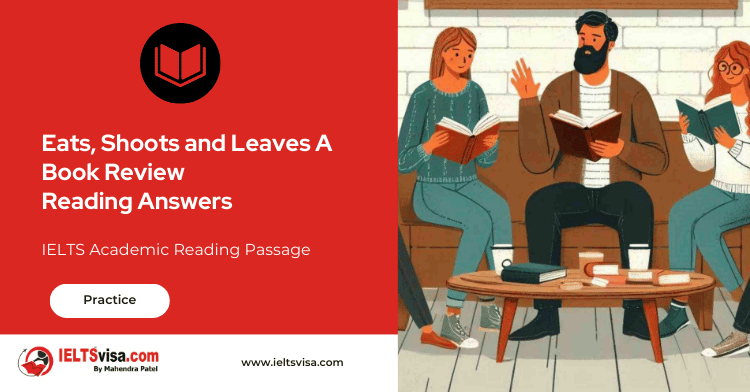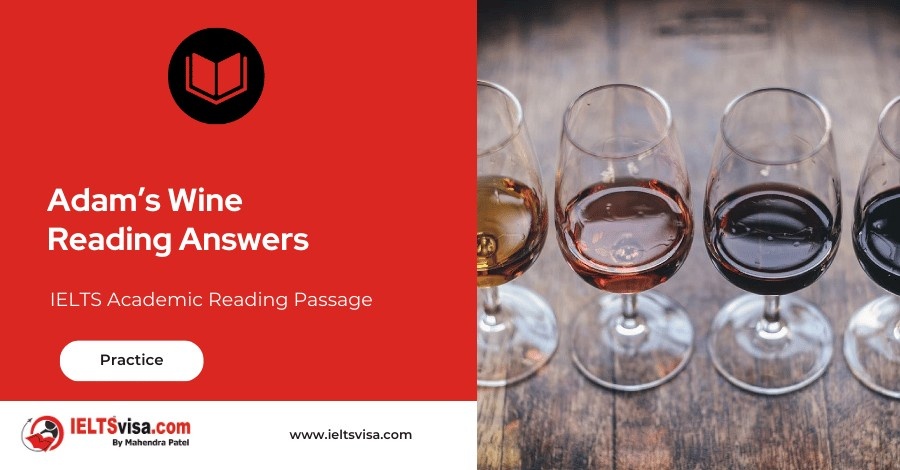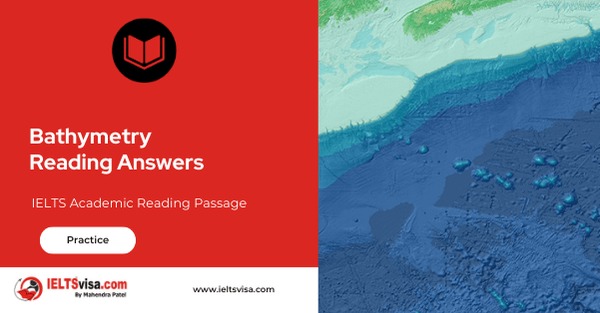Bamboo Reading Answer
IELTS General Reading Passage
Bamboo is a common woody plant. It grows tall and thin. It looks almost like a tree! It grows about twenty five metres tall. It is about fifteen centimetres wide. Bamboo looks like it is made of many small pieces. Thick lines divide it into small segments. And the inside of bamboo is empty. But it is hard and very strong.
Many people think bamboo is a tree. But it is not – it is a kind of grass. It grows mainly in East and South East Asia. It also grows in Latin America, India and parts of Africa and Australia. Bamboo grows extremely fast and spreads very quickly. There are 1500 different kinds of bamboo. People all over the world use it. And people are planting more of it. Some people call bamboo ‘the crop of the future.’ They have many good reasons to plant bamboo.
There are over 1,000 uses for bamboo! People in the past used bamboo for many things. They made musical instruments and weapons with bamboo. Artists used it for paintbrushes and paper. Fishermen used it to make equipment for catching fish. Some people even made boats from bamboo!
In China and India, doctors use bamboo in traditional medicine. Bamboo is also very useful for cooking. People put food inside the empty bamboo plant. This is a good container for cooking soup, rice or tea. But people also eat bamboo as a healthy food. People eat the soft part, or shoot, of the bamboo in many ways. Most Asian countries have special foods made from bamboo shoots.
Bamboo has been used in traditional buildings. But builders also use it today! The village of Noh Bo is just one example.
There are many modern uses for bamboo. In 1879 Thomas Edison created the first light bulb. He made it with treated bamboo!
People also use bamboo to make cloth. Beauty products sometimes contain bamboo. It is even in some water filters, to clean water! People have even designed vehicles and airplanes out of bamboo. In Ghana, people even make two wheeled bicycles from bamboo. In the Philippines, people make electricity from bamboo! Buildings, bicycles, light bulbs and even electricity: bamboo is an amazing plant.
These are just a few of the many ways people use bamboo. But bamboo is useful for a much more important reason. It is useful while it grows! Growing bamboo helps the environment in many ways. Bamboo provides oxygen, which improves air quality. It also reduces harmful carbon dioxide in the air. It does this more quickly than trees. Bamboo also provides shade and shelter from the sun.
In many places, hardwood trees are cut down for fuel or for building. This causes problems for the earth, animals, plants and air. To keep a good environment, people must replace the trees. But it takes a very long time for most trees to reach their full size. Many hardwood trees take 50 years to grow!
Bamboo is ready to use in only three years. Bamboo is the fastest growing woody plant in the world. It can grow about 60 centimeters in only one day. The bamboo plant grows to its full size in just three or four months. Some kinds of bamboo then become dry and hard. In three years, it is strong enough to harvest and use. And bamboo grows again when it is cut down. People can harvest it year after year.
Some people are sure that bamboo is ‘the crop of the future’. For example, Nicaragua has many hardwood forests. But people are cutting down three percent of the forests every year. One organization, Eco-planet Bamboo, is trying to replace these trees with bamboo.
Eco-Planet Bamboo planted a large bamboo farm. Through this farm, Eco-Planet Bamboo hopes to improve the environment. They also hope to improve life for local people. Bamboo is helping to reduce poverty in Nicaragua.
In Nicaragua, bamboo is providing jobs. Around the world, it is improving the environment and the economy. It is easy to see why people call bamboo the ‘crop of the future.’
Questions 1-7
Read the reading passage and fill in the blank below using ONLY ONE WORD OR A NUMBER.
- Bamboo is a common ……………… plant.
- There are ……………… different kinds of bamboo.
- Some people call bamboo ‘the ……………… of the future.’ .
- In China and India, doctors use bamboo in traditional …………………
- In Ghana, people even make ……………… from bamboo.
- In the Philippines, people make ……………… from bamboo!.
- In Nicaragua, bamboo is providing ……………… plant.

Solution:Bamboo Reading Answer
| 1. woody | 5. bicycles |
| 2. 1500 | 6. electricity |
| 3. crop | 7. jobs |
| 4. medicine |
Review and Practice
- Regularly practice with IELTS reading samples and time yourself to get used to the pressure of the exam.
- Review your mistakes to understand where you went wrong and how to avoid similar errors in the future.
Our Books
Master IELTS Speaking Part 1
IELTS Writing Task 1 Book
IELTS Writing Task 2 Book
Bamboo Reading Answer Explanation
Comin Soon
Practice IELTS Other Modules
IELTS Listening
The IELTS Listening test assesses how well you can understand spoken English in various contexts. It lasts about 30 minutes and is divided into four sections with a total of 40 questions. The listening tasks become increasingly difficult as the test progresses.
IELTS Academic Reading
The IELTS Academic Reading section assesses your ability to understand and interpret a variety of texts in academic settings. It is designed to evaluate a range of reading skills, including skimming for gist, reading for main ideas, reading for detail, understanding inferences, and recognizing a writer's opinions and arguments.
IELTS Speaking
The IELTS Speaking test assesses your ability to communicate in English on everyday topics. It lasts 11-14 minutes and consists of three parts: introduction, cue card, and a discussion based on the cue card topic.
IELTS General Reading
IELTS General Reading tests your ability to understand and interpret various types of texts. Here are some key areas and types of content you can expect to encounter in the reading section, along with tips for effective preparation.
IELTS Academic Writing Task 1
In IELTS Academic Writing Task 1, you are presented with a visual representation of information, such as graphs, charts, tables, or diagrams, and you are required to summarize, compare, or explain the data in your own words.
IELTS General Writing Task 1
In IELTS General Writing Task 1, you are required to write a letter based on a given situation. The letter can be formal, semi-formal, or informal, depending on the prompt. Here’s a breakdown of the key components to include in your letter
IELTS Academic Writing Task 2
In IELTS Academic Writing Task 2, you are required to write an essay in response to a question or topic. Here’s a guide to help you understand the essential elements of this task
IELTS Exam Tips
To succeed in the IELTS exam, practice regularly, familiarize yourself with the test format, improve your vocabulary, develop time management skills, and take mock tests to build confidence.
Grammer for IELTS
Grammar is the foundation of effective communication in English. Understanding tense usage, subject-verb agreement, and sentence structure enhances clarity and coherence in writing and speaking.
Vocabulary for IELTS
Vocabulary plays a crucial role in the IELTS (International English Language Testing System) exam, especially in the Speaking and Writing sections. Here’s an overview of why vocabulary is important and how it impacts your performance
RECENT IELTS SAMPLES QUESTIONS AND ANSWERS
Eats, Shoots and Leaves A Book Review Reading Answers
A. The title of Eats, Shoots and Leaves refers to a famously misplaced comma in a wildlife...
English Heritage Blue Plaques Scheme 2 Reading Answers
A. The blue plaques scheme has been running for over 140 years and is one of the oldest of its...
Adam’s Wine
A A Water is the giver and, at the same time, the taker of life. It covers most of the surface...
Locked Doors Open Access
The word, ‘security’, has both positive and negative connotations. Most of us would say that...
Half of Human Cultures Don’t Practice Romantic Lip on Lip Kissing Reading Answers
When you think about it, kissing is strange and a bit icky. You share saliva with someone,...
Bathymetry Reading Answer
The floor is OFten considered the last frontier on earth, as it is a domain that remains...













